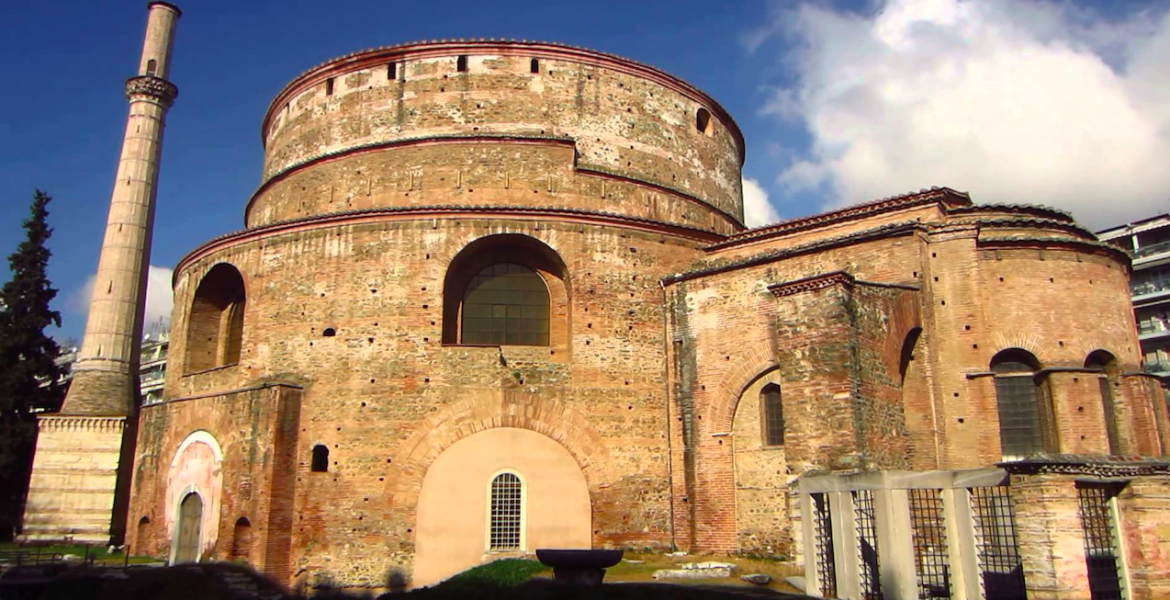Rotunda, one of the oldest religious sites in Thessaloniki
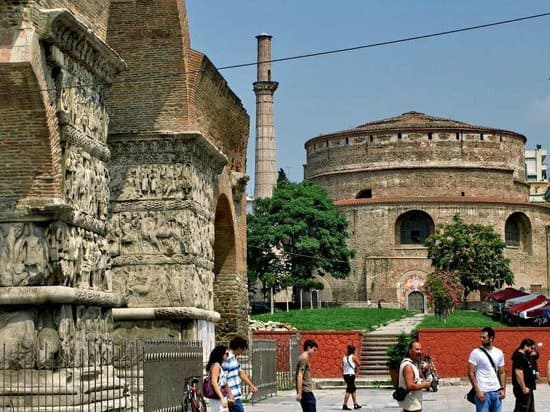
Built in 306 A.D. by the Romans, Rotunda is one of the oldest religious sites of Thessaloniki, situated 125m northeast of the Arch of Galerius on the upper side of Egnatia Street.
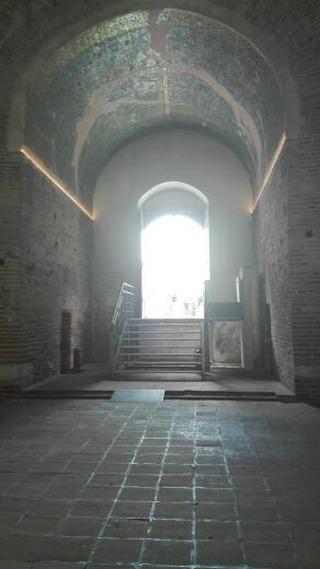
It was constructed as part of the complex of the Galerius Palace along with his Arch (Kamara), Navarinou Square and the Hippodrome. The Galerian Complex is the most well-preserved monument of its era in Europe and includes a linear axis which connects the Rotunda with the Arch and with the sea. This impressive cylindrical structure was built under the rule of Galerius Caesar and was intended to be his mausoleum although it was never used for this purpose. It was probably dedicated to Zeus and it served as the Metropolitan Church of Thessaloniki from 1523-1590. In 1998 it was enlisted as a World Heritage Site of UNESCO.
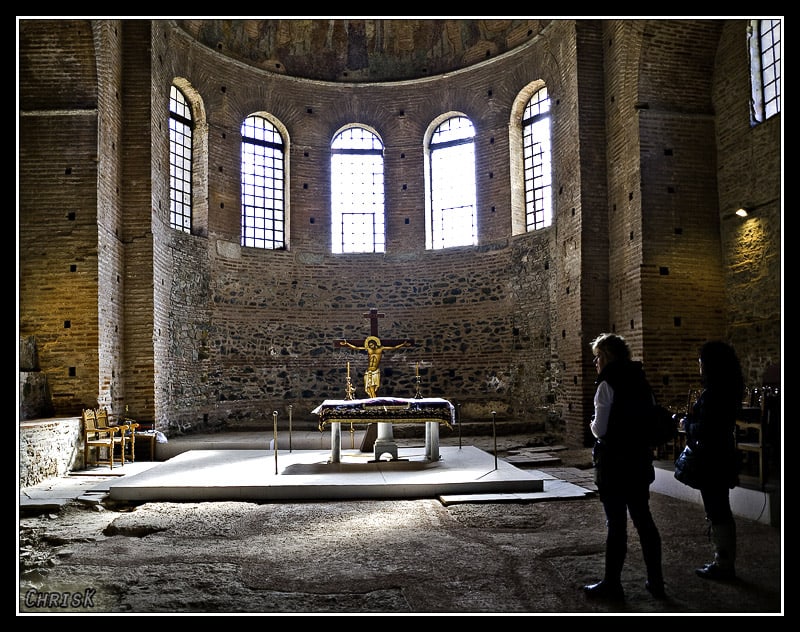
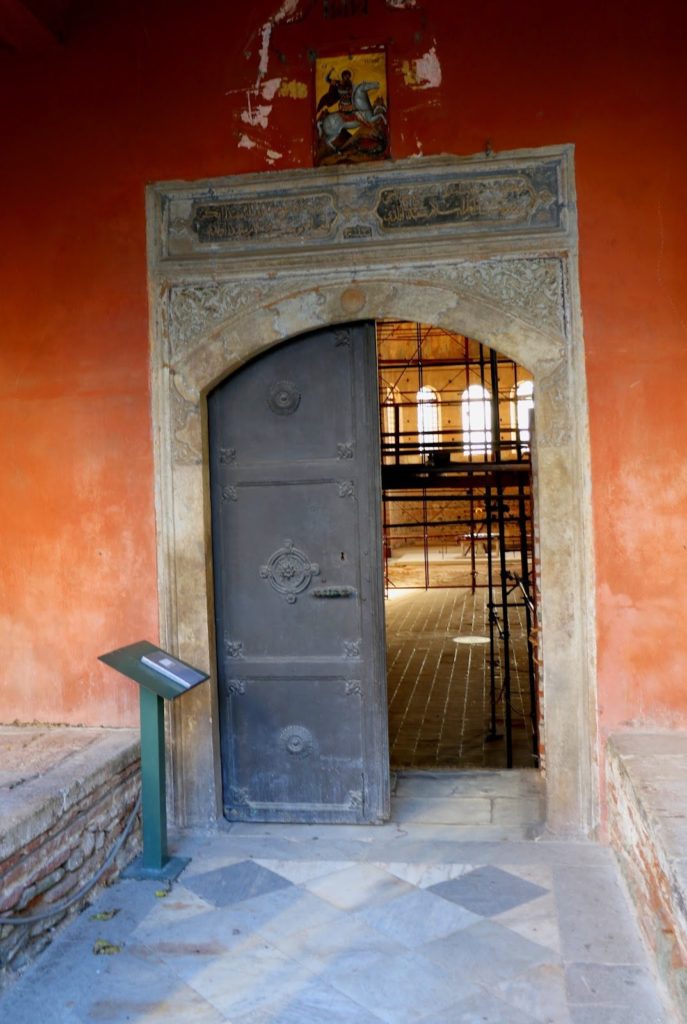
In terms of architecture the Rotunda is considered to be the twin monument of the Roman Pantheon due to their similar Greek –style design and the resemblance of their oculus, which is 29.80m high, has a diameter of 24.5m and its walls are more than 6m thick, providing great resistance in times of earthquakes, such as the one that occurred in 1978. In the 4thcentury AD the Byzantine Emperor Constantine I converted it into a church, with a symbol of Orthodox Christians, dedicated to the Archangels who are pictured in the mosaics of its walls along with other Early Byzantine masterpieces of early Cristian art that date back to the period between the 4th-6thCentury AD.
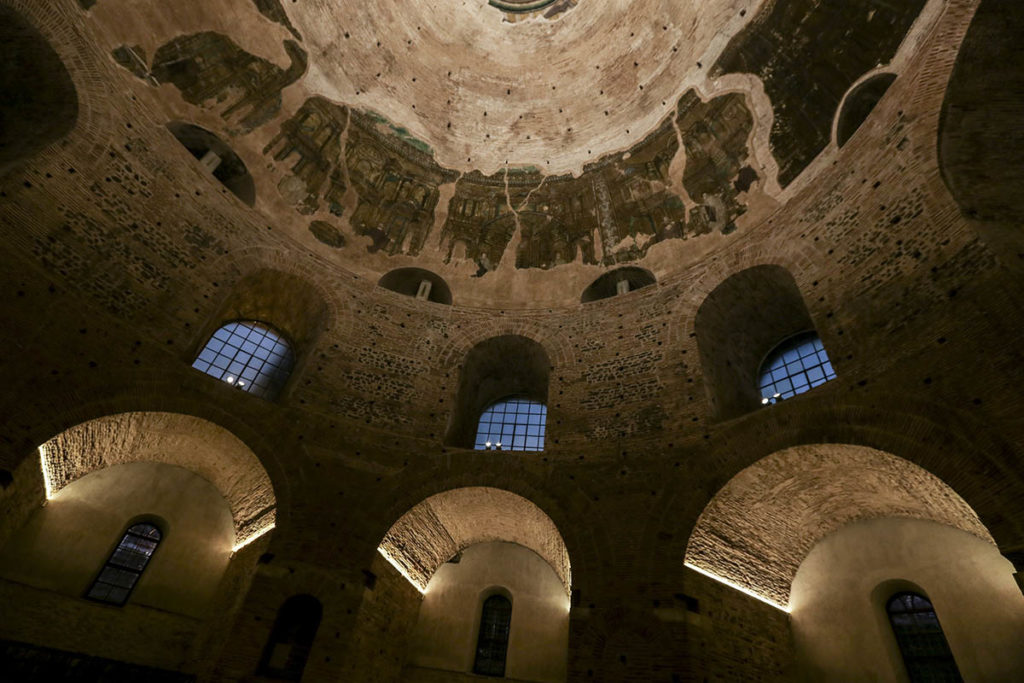
In the 14thcentury the Ottomans conquered Thessaloniki and in the late 16th Century the Rotunda became a mosque. A minaret was then added in the building and it still remains there reminding all of the intercultural identity of this imposing structure.
In 1912, after the deliberation of the city from the Turks, the mosque was converted into a church again under the name of Saint George, probably because of the little church with the same name situated very close to it. However, the name Rotunda was the one which prevailed due to the shape of its hemispherical dome.
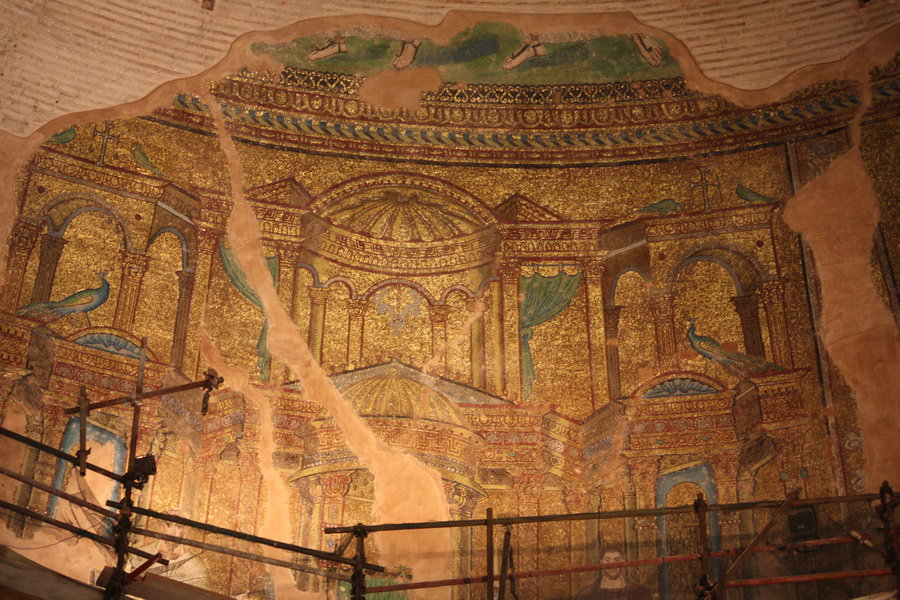
On the inside of the building, the brilliant mosaics of this very old temple are spread over three separate bands around the central dome. The use of gold, multi-colored glass, early Cristian glowing mosaics and the sacred portraits in combination with the natural light that comes through the geometrical features and the arched windows, give off a brightness from this dazzling view derived from the fine art of the early Byzantine period.
The iconographical images depict complex buildings upon a gold background, amongst others the Jordanian tombs of Petra, male figures wearing sandals and white gowns, probably the archangels to whom the temple was initially devoted, colorful birds, the fruits of Paradise upon silver geometrical surfaces on the walls and a central figure which is no longer visible, most probably Christ, holding a cross in his left hand. Another interesting mosaic that empowers the sacred atmosphere of the inside of the building is the faded image of the Ascension which dates back to the 9thCentury, the principal figure in the apse of the sanctuary from which only the image of the flying angels around the epicenter of the dome is preserved.
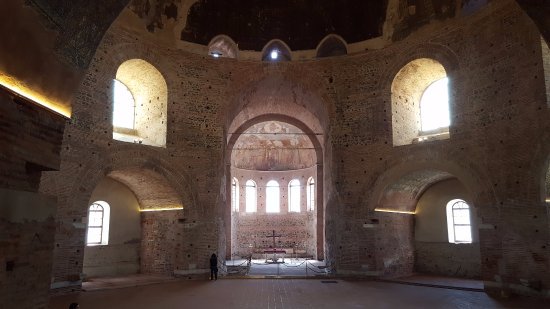
After approximately forty years of reconstruction, following the earthquake of 1978, the Rotunda opened again to the public in 2017. Although the work of restoration is still in progress it is nowadays a highly visited museum where tourists from all over the world gather to admire the fragments of the early Christian art as well as the architecture of this imposing building which has served three different cultures, the pagan, Islamic and the Christian, with the latter to prevail.

Outside the temple, there are Jewish tombs as well as other Byzantine remains to be seen. About twelve times a year the Rotunda is open for religious purposes, including the celebration of Saint George, as well as for live events such as concerts of classical music and therefore it is used both for religious and cultural interests due to its multifunctional identity.
In any case, it is worth a visit since it can make anyone feel the passage from the past to the present through the Byzantine reflections of this wonderful monument, the twin of the Pantheon.
by By Vicky Litska

